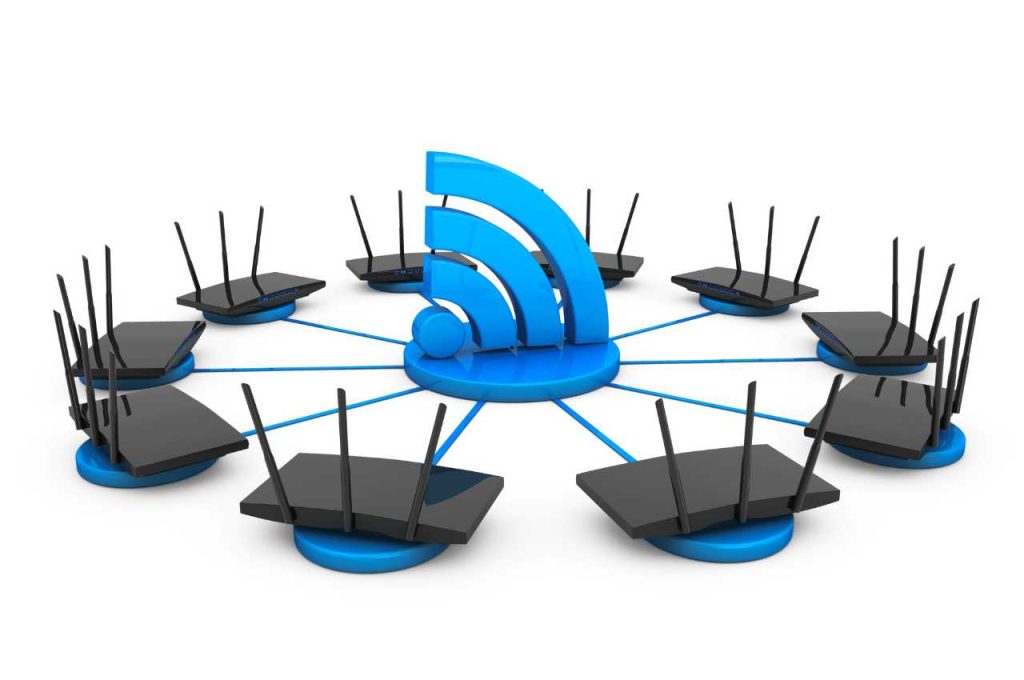To determine how much bandwidth you need, consider the number of devices and the activities you engage in online. Generally, for basic internet browsing and email usage, 1-5 Mbps is sufficient.
However, for online gaming, streaming, or video conferencing, you may need 25 Mbps or more. It’s important to evaluate your usage and choose a plan that meets your needs without overpaying for excess bandwidth. In today’s world, access to the internet is a necessity, not a luxury. Whether you’re working from home, streaming movies, or simply browsing the web, you need a reliable internet connection. But how much bandwidth do you need?
Bandwidth is the amount of data that can be transferred over an internet connection in a given amount of time. The more devices you have connected to your network and the more data-intensive activities you engage in, the more bandwidth you’ll need. We’ll explore how much bandwidth is necessary for various online activities and help you choose a plan that suits your needs.
Table of Contents
Importance of Bandwidth
Bandwidth is a crucial factor when it comes to ensuring a smooth and efficient online experience. It refers to the amount of data that can be transferred over a network within a specific timeframe. In today’s digital age, where everything from streaming videos and online gaming to business operations and communication relies heavily on the internet, having sufficient bandwidth is essential for seamless connectivity and productivity.

Bandwidth Basics
Bandwidth is the capacity of a network to transfer data. It determines the speed at which data can be downloaded or uploaded, impacting the overall performance of online activities. Higher bandwidth allows for faster and more efficient data transfer, while lower bandwidth can result in slower connections and increased loading times.
Impact of Insufficient Bandwidth
Insufficient bandwidth can lead to a range of issues, including slow webpage loading, buffering during video streaming, and dropped connections during online calls or video conferences. This can not only disrupt the user experience but also hinder productivity and communication, ultimately affecting business operations and customer satisfaction.
Calculating Bandwidth Needs
Determining “How Much Bandwidth Do I Need?” involves assessing factors like website traffic volume, the size and type of content served (such as videos or downloads), and expected user interactions. Start by estimating average daily visitors and their activities. Consider peak usage times and potential growth. Tools like bandwidth calculators can help project required bandwidth based on these factors, ensuring smooth website performance and user experience.
Factors Affecting Bandwidth Requirements
Various elements impact the amount of bandwidth you need for your online activities.
- Number of users: More users require higher bandwidth.
- Type of content: Streaming videos demand more bandwidth than browsing text.
- Peak usage times: Busy hours may necessitate additional bandwidth.
Bandwidth Calculation Formula
Estimating the required bandwidth involves a straightforward calculation.
| Parameter | Calculation |
| Total Data Usage | Sum of individual data needs |
| Peak Usage Factor | Multiplier for peak demands |
| Redundancy Factor | Buffer for unexpected spikes |
Bandwidth Optimization Techniques
Bandwidth optimization techniques are essential for ensuring efficient use of internet resources. By implementing various strategies, businesses and individuals can maximize their available bandwidth, leading to faster loading times and improved user experience. In this article, we will explore three key bandwidth optimization techniques: caching strategies, compression methods, and content delivery networks (CDNs).
Caching Strategies
Caching involves storing frequently accessed data locally to reduce the need for repeated requests to the server. By utilizing caching mechanisms, such as browser caching and server-side caching, websites can deliver content more quickly to users. This not only improves the user experience but also reduces the load on the server, leading to bandwidth savings.
Compression Methods
Compression techniques, such as GZIP compression, help minimize the size of files transmitted over the internet. By compressing files before transmission, websites can significantly reduce the amount of data that needs to be transferred, thereby optimizing bandwidth usage. Implementing compression methods is particularly effective for text-based content, such as HTML, CSS, and JavaScript files.
Content Delivery Networks (cdns)
CDNs are a network of servers distributed across various locations, designed to deliver content to users more efficiently. By leveraging CDNs, websites can minimize the physical distance between the server and the user, reducing latency and improving load times. Additionally, CDNs help distribute the bandwidth load across multiple servers, ensuring optimal performance even during peak traffic periods.
Network Monitoring and Management
Network monitoring and management are crucial aspects of maintaining a smooth and efficient network infrastructure. Effective network monitoring allows businesses to track their bandwidth usage, identify potential issues, and optimize network performance. Additionally, proper management ensures that resources are utilized effectively and potential security threats are mitigated.

Real-time Bandwidth Monitoring Tools
Real-time bandwidth monitoring tools provide businesses with valuable insights into their network performance. These tools allow for the continuous monitoring of bandwidth usage, enabling administrators to identify and address any potential bottlenecks or inefficiencies in real time. By utilizing these tools, businesses can proactively manage their network resources, optimize performance, and ensure a seamless user experience.
Bandwidth Usage Policies
Implementing bandwidth usage policies is essential for effectively managing network resources. These policies define acceptable usage limits, prioritize critical applications, and ensure fair allocation of bandwidth across the network. By establishing clear and transparent policies, businesses can minimize the risk of network congestion, prioritize mission-critical tasks, and maintain a consistent level of service for all users.
Bandwidth Upgrade Considerations
When considering a bandwidth upgrade, plan for future growth to avoid frequent adjustments.
- Assess current traffic patterns and projected growth.
- Calculate bandwidth needs based on expected increases in users or services.
Evaluate the financial implications of a bandwidth upgrade to ensure cost-effectiveness.
- Compare pricing plans from different providers.
- Consider long-term savings vs. immediate costs.
Bandwidth Allocation Best Practices
Bandwidth allocation best practices are crucial for optimizing network performance and ensuring that the most critical traffic receives the necessary resources. Prioritizing traffic and implementing Quality of Service (QoS) are key aspects of effective bandwidth allocation. By following these best practices, you can enhance the efficiency and reliability of your network while meeting the diverse demands of different applications and users.

Prioritizing Traffic
One of the fundamental bandwidth allocation best practices is prioritizing traffic based on its importance and characteristics. Critical applications such as VoIP, video conferencing, and real-time data transfer should be given high priority to ensure uninterrupted performance. On the other hand, less time-sensitive traffic like software updates and file downloads can be assigned lower priority.
Quality Of Service (qos) Implementation
Implementing Quality of Service (QoS) mechanisms is essential for effectively managing bandwidth allocation. QoS enables traffic classification and prioritization, allowing you to allocate resources based on the specific requirements of different applications and users. By setting up QoS policies, you can ensure that mission-critical traffic receives the necessary bandwidth while preventing non-essential applications from consuming excessive resources.
Conclusion
To determine your needed bandwidth, consider factors like number of users and online activities. Regularly monitoring usage helps ensure optimal performance. Tailoring bandwidth to your specific needs can enhance internet experience and prevent slowdowns. Stay informed, stay connected, and enjoy seamless online browsing.
